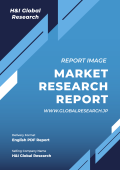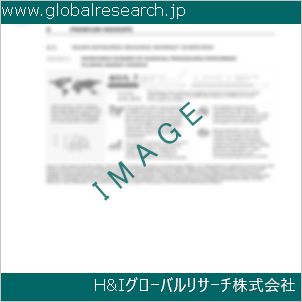1 Anti-Corrosion Additives Market Overview
1.1 Product Definition
1.2 Anti-Corrosion Additives Segment by Type
1.2.1 Global Anti-Corrosion Additives Market Value Growth Rate Analysis by Type 2022 VS 2029
1.2.2 Sodium Formate
1.2.3 Potassium Sorbate
1.2.4 Others
1.3 Anti-Corrosion Additives Segment by Application
1.3.1 Global Anti-Corrosion Additives Market Value Growth Rate Analysis by Application: 2022 VS 2029
1.3.2 Dairy Products
1.3.3 Instant Food
1.3.4 Others
1.4 Global Market Growth Prospects
1.4.1 Global Anti-Corrosion Additives Production Value Estimates and Forecasts (2018-2029)
1.4.2 Global Anti-Corrosion Additives Production Capacity Estimates and Forecasts (2018-2029)
1.4.3 Global Anti-Corrosion Additives Production Estimates and Forecasts (2018-2029)
1.4.4 Global Anti-Corrosion Additives Market Average Price Estimates and Forecasts (2018-2029)
1.5 Assumptions and Limitations
2 Market Competition by Manufacturers
2.1 Global Anti-Corrosion Additives Production Market Share by Manufacturers (2018-2023)
2.2 Global Anti-Corrosion Additives Production Value Market Share by Manufacturers (2018-2023)
2.3 Global Key Players of Anti-Corrosion Additives, Industry Ranking, 2021 VS 2022 VS 2023
2.4 Global Anti-Corrosion Additives Market Share by Company Type (Tier 1, Tier 2 and Tier 3)
2.5 Global Anti-Corrosion Additives Average Price by Manufacturers (2018-2023)
2.6 Global Key Manufacturers of Anti-Corrosion Additives, Manufacturing Base Distribution and Headquarters
2.7 Global Key Manufacturers of Anti-Corrosion Additives, Product Offered and Application
2.8 Global Key Manufacturers of Anti-Corrosion Additives, Date of Enter into This Industry
2.9 Anti-Corrosion Additives Market Competitive Situation and Trends
2.9.1 Anti-Corrosion Additives Market Concentration Rate
2.9.2 Global 5 and 10 Largest Anti-Corrosion Additives Players Market Share by Revenue
2.10 Mergers & Acquisitions, Expansion
3 Anti-Corrosion Additives Production by Region
3.1 Global Anti-Corrosion Additives Production Value Estimates and Forecasts by Region: 2018 VS 2022 VS 2029
3.2 Global Anti-Corrosion Additives Production Value by Region (2018-2029)
3.2.1 Global Anti-Corrosion Additives Production Value Market Share by Region (2018-2023)
3.2.2 Global Forecasted Production Value of Anti-Corrosion Additives by Region (2024-2029)
3.3 Global Anti-Corrosion Additives Production Estimates and Forecasts by Region: 2018 VS 2022 VS 2029
3.4 Global Anti-Corrosion Additives Production by Region (2018-2029)
3.4.1 Global Anti-Corrosion Additives Production Market Share by Region (2018-2023)
3.4.2 Global Forecasted Production of Anti-Corrosion Additives by Region (2024-2029)
3.5 Global Anti-Corrosion Additives Market Price Analysis by Region (2018-2023)
3.6 Global Anti-Corrosion Additives Production and Value, Year-over-Year Growth
3.6.1 North America Anti-Corrosion Additives Production Value Estimates and Forecasts (2018-2029)
3.6.2 Europe Anti-Corrosion Additives Production Value Estimates and Forecasts (2018-2029)
3.6.3 China Anti-Corrosion Additives Production Value Estimates and Forecasts (2018-2029)
3.6.4 Japan Anti-Corrosion Additives Production Value Estimates and Forecasts (2018-2029)
4 Anti-Corrosion Additives Consumption by Region
4.1 Global Anti-Corrosion Additives Consumption Estimates and Forecasts by Region: 2018 VS 2022 VS 2029
4.2 Global Anti-Corrosion Additives Consumption by Region (2018-2029)
4.2.1 Global Anti-Corrosion Additives Consumption by Region (2018-2023)
4.2.2 Global Anti-Corrosion Additives Forecasted Consumption by Region (2024-2029)
4.3 North America
4.3.1 North America Anti-Corrosion Additives Consumption Growth Rate by Country: 2018 VS 2022 VS 2029
4.3.2 North America Anti-Corrosion Additives Consumption by Country (2018-2029)
4.3.3 United States
4.3.4 Canada
4.4 Europe
4.4.1 Europe Anti-Corrosion Additives Consumption Growth Rate by Country: 2018 VS 2022 VS 2029
4.4.2 Europe Anti-Corrosion Additives Consumption by Country (2018-2029)
4.4.3 Germany
4.4.4 France
4.4.5 U.K.
4.4.6 Italy
4.4.7 Russia
4.5 Asia Pacific
4.5.1 Asia Pacific Anti-Corrosion Additives Consumption Growth Rate by Region: 2018 VS 2022 VS 2029
4.5.2 Asia Pacific Anti-Corrosion Additives Consumption by Region (2018-2029)
4.5.3 China
4.5.4 Japan
4.5.5 South Korea
4.5.6 China Taiwan
4.5.7 Southeast Asia
4.5.8 India
4.6 Latin America, Middle East & Africa
4.6.1 Latin America, Middle East & Africa Anti-Corrosion Additives Consumption Growth Rate by Country: 2018 VS 2022 VS 2029
4.6.2 Latin America, Middle East & Africa Anti-Corrosion Additives Consumption by Country (2018-2029)
4.6.3 Mexico
4.6.4 Brazil
4.6.5 Turkey
5 Segment by Type
5.1 Global Anti-Corrosion Additives Production by Type (2018-2029)
5.1.1 Global Anti-Corrosion Additives Production by Type (2018-2023)
5.1.2 Global Anti-Corrosion Additives Production by Type (2024-2029)
5.1.3 Global Anti-Corrosion Additives Production Market Share by Type (2018-2029)
5.2 Global Anti-Corrosion Additives Production Value by Type (2018-2029)
5.2.1 Global Anti-Corrosion Additives Production Value by Type (2018-2023)
5.2.2 Global Anti-Corrosion Additives Production Value by Type (2024-2029)
5.2.3 Global Anti-Corrosion Additives Production Value Market Share by Type (2018-2029)
5.3 Global Anti-Corrosion Additives Price by Type (2018-2029)
6 Segment by Application
6.1 Global Anti-Corrosion Additives Production by Application (2018-2029)
6.1.1 Global Anti-Corrosion Additives Production by Application (2018-2023)
6.1.2 Global Anti-Corrosion Additives Production by Application (2024-2029)
6.1.3 Global Anti-Corrosion Additives Production Market Share by Application (2018-2029)
6.2 Global Anti-Corrosion Additives Production Value by Application (2018-2029)
6.2.1 Global Anti-Corrosion Additives Production Value by Application (2018-2023)
6.2.2 Global Anti-Corrosion Additives Production Value by Application (2024-2029)
6.2.3 Global Anti-Corrosion Additives Production Value Market Share by Application (2018-2029)
6.3 Global Anti-Corrosion Additives Price by Application (2018-2029)
7 Key Companies Profiled
7.1 Basf
7.1.1 Basf Anti-Corrosion Additives Corporation Information
7.1.2 Basf Anti-Corrosion Additives Product Portfolio
7.1.3 Basf Anti-Corrosion Additives Production, Value, Price and Gross Margin (2018-2023)
7.1.4 Basf Main Business and Markets Served
7.1.5 Basf Recent Developments/Updates
7.2 Jungbunzlauer Suisse Ag
7.2.1 Jungbunzlauer Suisse Ag Anti-Corrosion Additives Corporation Information
7.2.2 Jungbunzlauer Suisse Ag Anti-Corrosion Additives Product Portfolio
7.2.3 Jungbunzlauer Suisse Ag Anti-Corrosion Additives Production, Value, Price and Gross Margin (2018-2023)
7.2.4 Jungbunzlauer Suisse Ag Main Business and Markets Served
7.2.5 Jungbunzlauer Suisse Ag Recent Developments/Updates
7.3 Archer Daniels Midland
7.3.1 Archer Daniels Midland Anti-Corrosion Additives Corporation Information
7.3.2 Archer Daniels Midland Anti-Corrosion Additives Product Portfolio
7.3.3 Archer Daniels Midland Anti-Corrosion Additives Production, Value, Price and Gross Margin (2018-2023)
7.3.4 Archer Daniels Midland Main Business and Markets Served
7.3.5 Archer Daniels Midland Recent Developments/Updates
7.4 Tate & Lyle
7.4.1 Tate & Lyle Anti-Corrosion Additives Corporation Information
7.4.2 Tate & Lyle Anti-Corrosion Additives Product Portfolio
7.4.3 Tate & Lyle Anti-Corrosion Additives Production, Value, Price and Gross Margin (2018-2023)
7.4.4 Tate & Lyle Main Business and Markets Served
7.4.5 Tate & Lyle Recent Developments/Updates
7.5 Ravago Chemicals
7.5.1 Ravago Chemicals Anti-Corrosion Additives Corporation Information
7.5.2 Ravago Chemicals Anti-Corrosion Additives Product Portfolio
7.5.3 Ravago Chemicals Anti-Corrosion Additives Production, Value, Price and Gross Margin (2018-2023)
7.5.4 Ravago Chemicals Main Business and Markets Served
7.5.5 Ravago Chemicals Recent Developments/Updates
7.6 Dupont
7.6.1 Dupont Anti-Corrosion Additives Corporation Information
7.6.2 Dupont Anti-Corrosion Additives Product Portfolio
7.6.3 Dupont Anti-Corrosion Additives Production, Value, Price and Gross Margin (2018-2023)
7.6.4 Dupont Main Business and Markets Served
7.6.5 Dupont Recent Developments/Updates
7.7 Celanese
7.7.1 Celanese Anti-Corrosion Additives Corporation Information
7.7.2 Celanese Anti-Corrosion Additives Product Portfolio
7.7.3 Celanese Anti-Corrosion Additives Production, Value, Price and Gross Margin (2018-2023)
7.7.4 Celanese Main Business and Markets Served
7.7.5 Celanese Recent Developments/Updates
7.8 Ingredion
7.8.1 Ingredion Anti-Corrosion Additives Corporation Information
7.8.2 Ingredion Anti-Corrosion Additives Product Portfolio
7.8.3 Ingredion Anti-Corrosion Additives Production, Value, Price and Gross Margin (2018-2023)
7.8.4 Ingredion Main Business and Markets Served
7.7.5 Ingredion Recent Developments/Updates
7.9 Corbion
7.9.1 Corbion Anti-Corrosion Additives Corporation Information
7.9.2 Corbion Anti-Corrosion Additives Product Portfolio
7.9.3 Corbion Anti-Corrosion Additives Production, Value, Price and Gross Margin (2018-2023)
7.9.4 Corbion Main Business and Markets Served
7.9.5 Corbion Recent Developments/Updates
7.10 Cargill
7.10.1 Cargill Anti-Corrosion Additives Corporation Information
7.10.2 Cargill Anti-Corrosion Additives Product Portfolio
7.10.3 Cargill Anti-Corrosion Additives Production, Value, Price and Gross Margin (2018-2023)
7.10.4 Cargill Main Business and Markets Served
7.10.5 Cargill Recent Developments/Updates
7.11 Evonik Industries
7.11.1 Evonik Industries Anti-Corrosion Additives Corporation Information
7.11.2 Evonik Industries Anti-Corrosion Additives Product Portfolio
7.11.3 Evonik Industries Anti-Corrosion Additives Production, Value, Price and Gross Margin (2018-2023)
7.11.4 Evonik Industries Main Business and Markets Served
7.11.5 Evonik Industries Recent Developments/Updates
7.12 Chr. Hansen Holding
7.12.1 Chr. Hansen Holding Anti-Corrosion Additives Corporation Information
7.12.2 Chr. Hansen Holding Anti-Corrosion Additives Product Portfolio
7.12.3 Chr. Hansen Holding Anti-Corrosion Additives Production, Value, Price and Gross Margin (2018-2023)
7.12.4 Chr. Hansen Holding Main Business and Markets Served
7.12.5 Chr. Hansen Holding Recent Developments/Updates
7.13 Kerry Group
7.13.1 Kerry Group Anti-Corrosion Additives Corporation Information
7.13.2 Kerry Group Anti-Corrosion Additives Product Portfolio
7.13.3 Kerry Group Anti-Corrosion Additives Production, Value, Price and Gross Margin (2018-2023)
7.13.4 Kerry Group Main Business and Markets Served
7.13.5 Kerry Group Recent Developments/Updates
8 Industry Chain and Sales Channels Analysis
8.1 Anti-Corrosion Additives Industry Chain Analysis
8.2 Anti-Corrosion Additives Key Raw Materials
8.2.1 Key Raw Materials
8.2.2 Raw Materials Key Suppliers
8.3 Anti-Corrosion Additives Production Mode & Process
8.4 Anti-Corrosion Additives Sales and Marketing
8.4.1 Anti-Corrosion Additives Sales Channels
8.4.2 Anti-Corrosion Additives Distributors
8.5 Anti-Corrosion Additives Customers
9 Anti-Corrosion Additives Market Dynamics
9.1 Anti-Corrosion Additives Industry Trends
9.2 Anti-Corrosion Additives Market Drivers
9.3 Anti-Corrosion Additives Market Challenges
9.4 Anti-Corrosion Additives Market Restraints
10 Research Finding and Conclusion
11 Methodology and Data Source
11.1 Methodology/Research Approach
11.1.1 Research Programs/Design
11.1.2 Market Size Estimation
11.1.3 Market Breakdown and Data Triangulation
11.2 Data Source
11.2.1 Secondary Sources
11.2.2 Primary Sources
11.3 Author List
11.4 Disclaimer
| ※参考情報 防食添加剤とは、金属や合金の腐食を防止するために使用される化学物質のことです。腐食は通常、金属が環境の影響を受けて酸化されたり、化学反応を起こしたりすることによって進行します。これにより、金属の強度や耐久性が低下し、ひいては機器や構造物の破損につながる可能性があります。そのため、防食添加剤は工業的な用途や日常生活において非常に重要な役割を果たしています。 防食添加剤の特徴としては、主に以下の点が挙げられます。まず、腐食を防ぐために特定の化学反応を抑制する、もしくは反応を遅延させる能力があります。また、一般的に金属表面に薄い被膜を形成することで、外部環境との接触を遮断する効果もあります。さらに、防食添加剤は使用環境や材料に応じて異なる種類が存在し、それぞれが持つ特性に応じた適切な選択が必要となります。 防食添加剤にはいくつかの種類があります。最も一般的なものは、酸化防止剤、腐食抑制剤、及び被膜形成剤です。酸化防止剤は、金属が酸素と反応し酸化することを防止する添加剤です。このタイプの添加剤は、特に油脂や塗料の分野で多く使われます。腐食抑制剤は、金属と腐食因子との反応を抑えることで、腐食進行を防ぎます。具体的な例としては、亜鉛やクロム系の腐食抑制剤が挙げられます。被膜形成剤は、金属表面に保護膜を形成し、物理的・化学的な攻撃から金属を守る添加剤です。これは、例えば、フッ素樹脂やエポキシ樹脂を基にした製品に見られます。 防食添加剤の用途は多岐にわたります。例えば、建築や土木工事における構造物の防食、車両や船舶の塗装、さらには電子機器の保護など、さまざまな分野で利用されています。特に海洋環境や化学プラントなど、腐食環境が厳しい場所では、防食添加剤が欠かせません。これらの添加剤を使用することで、メンテナンスコストの削減や寿命の延長が期待できるからです。 防食添加剤の関連技術としては、表面処理技術やメンテナンス技術が挙げられます。表面処理技術は、金属の表面を化学的または物理的に改良する方法であり、これにより防食性能を強化することが可能になります。具体的には、メッキや塗装、熱処理などが含まれます。また、腐食モニタリング技術も関連しており、腐食の進行状況をリアルタイムで把握することで、適切な防食対策を講じることができます。 防食添加剤の選定にはいくつかのポイントが存在します。まず、対象となる金属の種類や形状、さらに使用される環境条件(例えば、温度や湿度、化学薬品の存在など)を考慮する必要があります。次に、防食添加剤の効果が持続する期間や、その経済性についても評価が求められます。また、環境への影響や人体への安全性も重要な要素です。最近では、環境に配慮した「グリーン添加剤」が注目されており、これらは低毒性で生分解性に優れているため、持続可能な社会の構築に寄与することが期待されています。 さらに、防食添加剤のテスト方法も重要です。腐食試験や耐候性試験を通じて、添加剤の効果を定量的に評価することができます。これにより、新材料や新しい防食技術の開発が進み、より効果的な防食策が実現されます。 近年では、新しい技術としてナノ材料を用いた防食添加剤も注目されています。ナノ粒子は、その高い表面積からきわめて効果的な防護膜を形成することが可能であり、従来の添加剤よりも高い防食性能を発揮することが期待されています。また、スマートコーティング技術も進化しており、環境の変化に応じて自動的に防食機能が調整されるといった革新的な材料が開発されています。 このように、防食添加剤は多様な用途と特性を持ち、持続可能な社会の実現に向けた重要な技術の一つとなっています。これからも新しい研究や開発が進むことで、さらなる高性能化や環境負荷の軽減が期待されており、業界の動向に注目が集まっています。防食技術の進化により、私たちの生活や産業活動がより安全かつ持続可能なものになることが望まれます。 |
❖ 免責事項 ❖
http://www.globalresearch.jp/disclaimer












